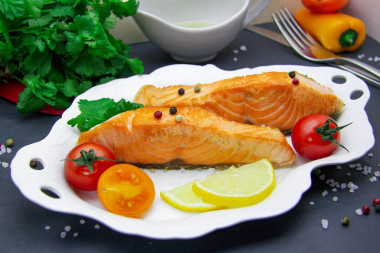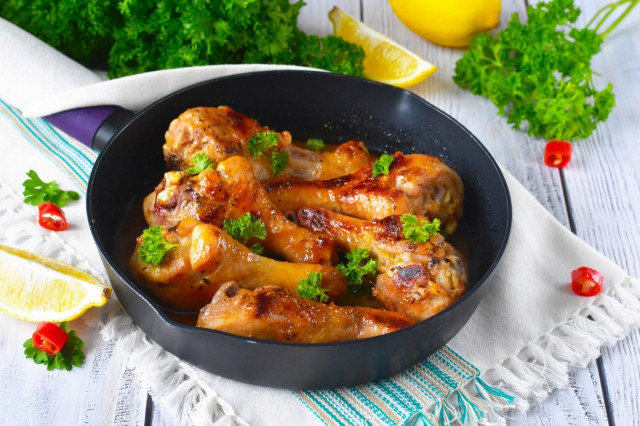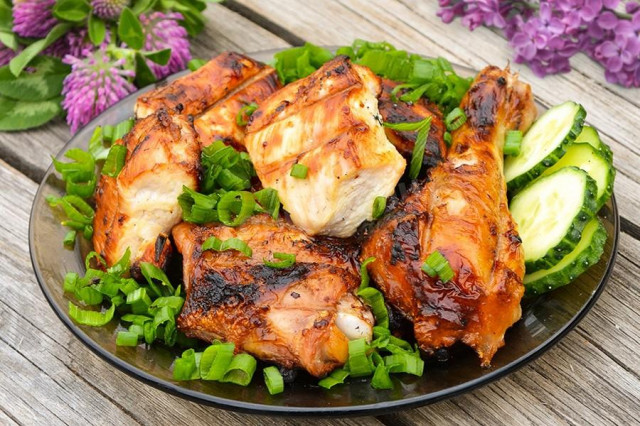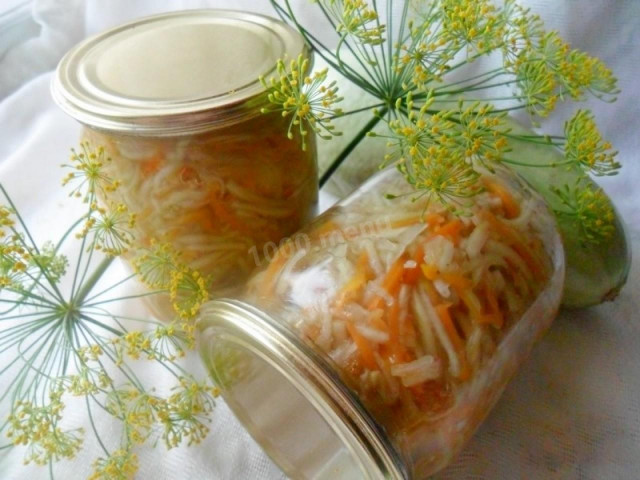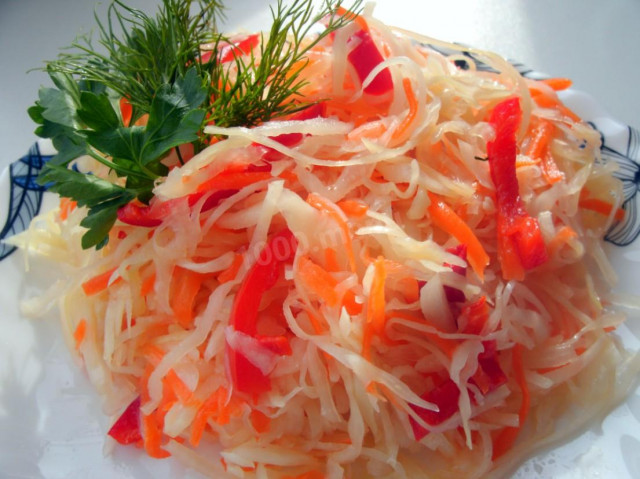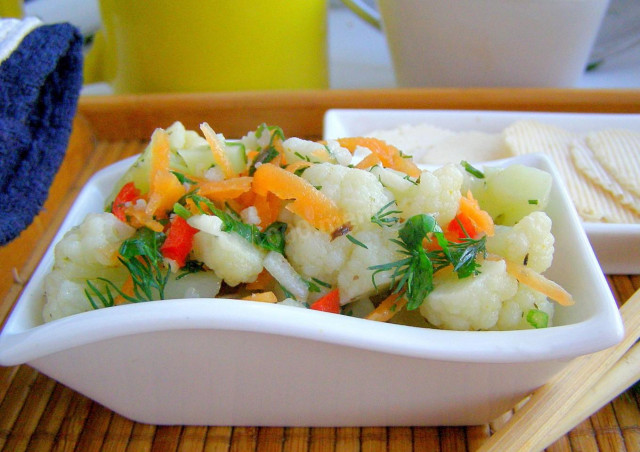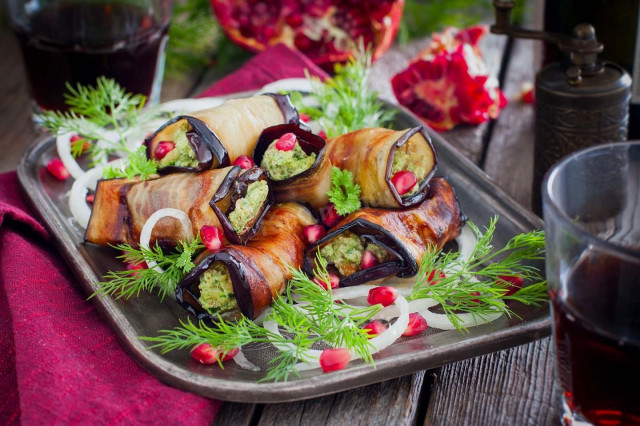Composition / ingredients
Step-by-step cooking
Step 1:
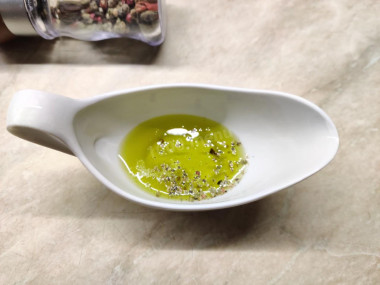
How to fry red fish in a frying pan? Fish for this recipe is better to take fresh, not frozen, it will turn out much tastier. First of all, prepare the marinade for the fish. How to make marinade? To do this, in a small plate or bowl, mix olive oil and pepper to taste. If there is no olive oil, then take the usual refined vegetable oil.
Step 2:
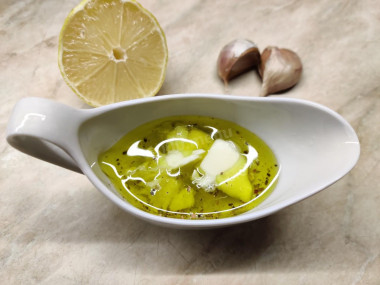
Peel the garlic clove and crush it with the flat side of a knife. It is not necessary to grind garlic more strongly, since it is needed only for flavoring the oil. Add lemon juice to the marinade. It is better to squeeze lemon into the marinade through a strainer. This is guaranteed to save him from getting lemon seeds and unnecessary pulp.
Step 3:
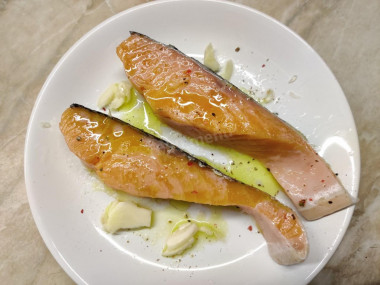
Marinate the fish. How to marinate fish? Wash the fish and dry it with paper towels. Cut it into portions, then smear the resulting marinade on all sides (it is convenient to do with a culinary brush). Tighten the fish plate with cling film and send it to the refrigerator for an hour to marinate.
Step 4:
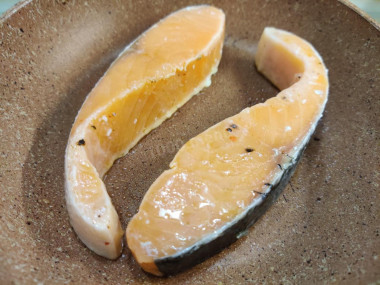
After an hour, heat a dry frying pan over high heat. Then reduce the heat to medium and lay out the fish. Fry the pieces for four minutes on one side.
Step 5:
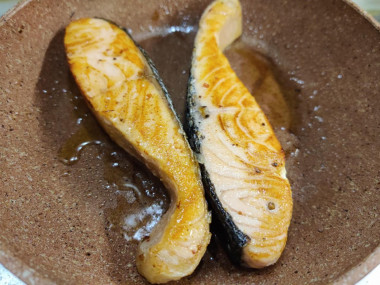
Turn the pieces of fish to the other side and fry them for another four minutes. Do not cover the pan with a lid. In general, the roasting time depends on many factors — the size and thickness of the pieces, the type of fish, the type of frying pan and plate. It is worth focusing on the external signs of fish readiness: the color of the pulp and the appearance of a ruddy crust. Season the fried fish with salt before serving. Serve hot.
You can marinate and fry in this way any kind of red fish of the salmon family: salmon, trout, sockeye salmon, pink salmon, chinook salmon or chum salmon.
Since salmon itself is a rather fatty variety of red fish, the probability of drying out and burning is almost zero. Salmon after frying will turn out juicy and tender. It's hard to spoil it.
But with a drier pink salmon, for example, you should be more careful and constantly monitor the cooking process to avoid over-drying the meat. It is better to fry pink salmon not in a dry frying pan, but on a greased sunflower oil.
In any case, whatever kind of red fish you choose, the most important thing here is not to keep the noble fish on the fire for too long so that the meat does not become dry. Red fish, fortunately, is cooked quickly enough.
I served salmon with lemon slices. As a side dish there was a salad of fresh vegetables with olive oil.
If there is a need to make the dish more satisfying, then you can offer mashed potatoes, boiled rice (black or brown rice will look especially good) or couscous with a drop of olive oil and dried Provencal herbs (oregano, rosemary and basil) as a side dish.
Bon appetit!
For this recipe, it is better to take not frozen, but fresh fish, otherwise the finished fish risks getting dry.
Since the degree of salinity, sweetness, bitterness, sharpness, acid, burning is individual for everyone, always add spices, spices and seasonings, focusing on your taste! If you put some of the seasonings for the first time, then keep in mind that there are spices that it is especially important not to shift (for example, chili pepper).
Use oil with a high smoking temperature for frying! Any oils are useful only until a certain temperature is reached - the point of smoking, at which the oil begins to burn and toxic substances, including carcinogens, are formed in it.
Unrefined oils, with rare exceptions, have a low smoking point. There are a lot of unfiltered organic particles in them, which quickly begin to burn.
Refined oils are more resistant to heating, and their smoking point is higher. If you are going to cook food in the oven, on a frying pan or grill, make sure that you use oil with a high smoking point. The most common of the oils with a high smoking point: refined varieties of sunflower, olive and grape.
Caloric content of the products possible in the composition of the dish
- Garlic - 143 kcal/100g
- Salt - 0 kcal/100g
- Lemon juice - 16 kcal/100g
- Olive oil - 913 kcal/100g
- Ground hot pepper - 21 kcal/100g
- Red Fish - 191 kcal/100g


